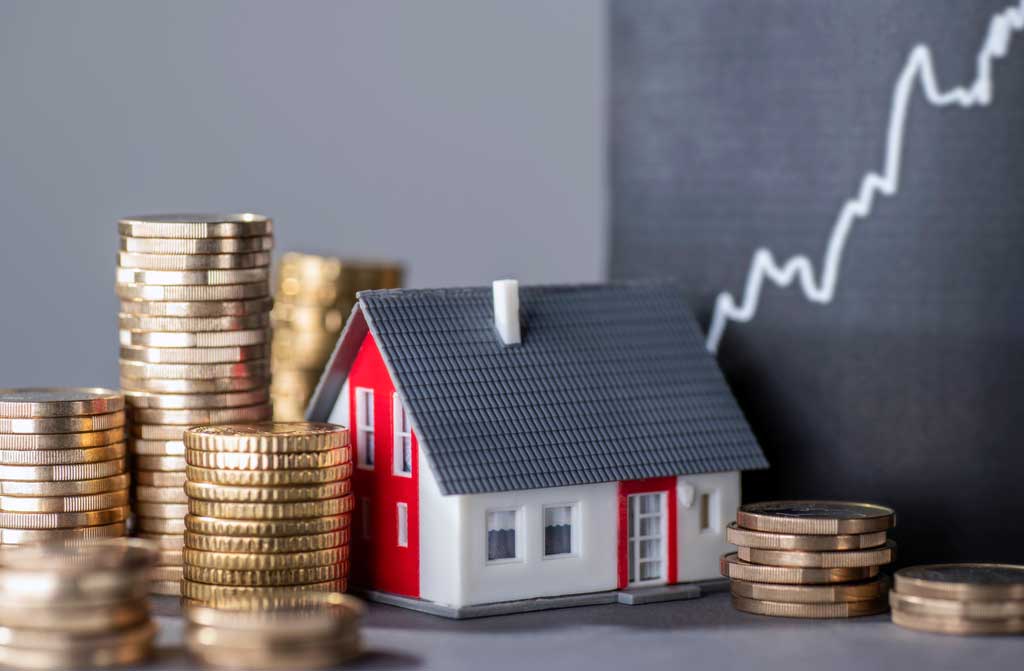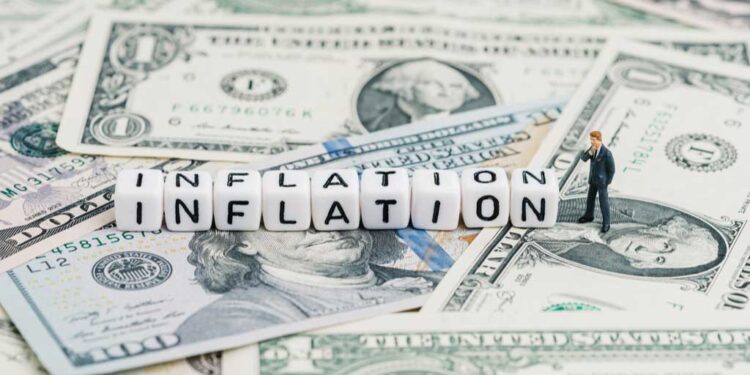The phenomenon of inflation is shaking the world, affecting our day-to-day life and our mood wherever on the globe we may be. Inflation in America is still soaring after hitting a 40-year high at the end of the last year, and cities with the highest inflation rates are feeling it the most. Due to circumstances like the steps taken by the Federal Reserve to raise rates, inflation appears to be slowing down slightly. The pandemic, or the war in Ukraine, is the major cause of inflation, and we will continue to see interest rate hikes from time to time. Inflation can be felt everywhere, especially in the real estate market, with many factors influencing the housing crisis and causing headaches. If the attempts to curb inflation will be successful – it remains the puzzle of the near future.
Inflation rates seem to differ depending on the area, and some cities are affected more severely than others. A few significant factors determine the cities with the highest inflation rates and also what city has the highest inflation rate of them all. Here’s what we’ve learned about the current situation.
The drive behind inflation

The push behind inflation has one major cause we can point directly at right now: housing costs. The US is not affected homogeneously, with some areas being more affordable than others. But the cities with the highest inflation are seriously feeling the consequences. Be it rental prices or rent-equivalent housing expenses, the roof above one’s head is costing a lot more right now than it used to cost in the not-so-distant past. The real estate buying frenzy of the post-pandemic with its low home prices created an imbalance in the market, and it has now come to an end. But now it’s suddenly the other side of the spectrum, and the changes will have an effect on the economy.
There are two other major driving causes: the Russian-Ukrainian war, which ended up affecting the whole world with restrictions on resources and supplies. The most universally felt changes are the uncertainties regarding gas and fuel supplies.
Areas hit hardest by the Covid-19 pandemic had their own particular problems. In the beginning, the US government saw the dangers of an economic collapse and loaded money into the economy in order to prevent it. Now, the Fed is making efforts to control the inflation resulting from that by raising interest rates, for example. It’s like wire-dancing: Controlling things too hard has the risk of leading to a recession.
How does inflation affect the real estate market?

At the end of the year, many people have been expressing their concerns about the real estate market situation. Some said that we are due for another real estate recession. And the truth is, statistics haven’t been showing much optimism lately. According to a recent survey by CraftJack, 61% of Americans consider it too expensive to buy a home. 60% of 1000 renters confirmed that it’s becoming more and more challenging to pay the rent. Cities with the highest inflation rates are experiencing the most problems, with some crazy rises in rental and housing prices.
Still, there are lots of clashing pieces of information on the internet about the real estate market trends for 2023. Whether you’re looking to buy or sell, it’s advised to do thorough research and avoid the misinformation campaigns going on. Listen to the opinions of experts, or take the advice of a real estate professional to make the best decision. Additionally, understanding the housing market on your own might be more time-consuming, but it’s also a legitimate path to take.
What’s happening, in a nutshell, is that the rise of the interest rates is keeping people from buying or selling at the moment. The high interest rates scare off potential buyers, making home prices drop. Sellers don’t want to enter the market because of the sudden decrease in prices, leading to an inventory shortage. Homes seem less affordable at the beginning of the year, and selling prices will probably return to the pre-pandemic numbers.
Inflation brings changes to everyone on the market. The changes in the real estate market trends can be game-changers for investors, too. What to invest in during inflation can depend on factors like inflation, and cities with highest inflation rates are affected more than others that got away with smaller numbers.
Cities with the highest inflation right now

The title for the city with the highest inflation rate in the US has been passed on from country to country in the past period. Currently, according to WalletHub’s statistics, the Miami-Fort Lauderdale-West Palm Beach, FL, is leading, with 9.9%. Not so long ago, at the beginning of January, the Miami area was only third on the list, with the Phoenix area being the most affected. Other cities with the highest inflation on the top of the list have been Atlanta-Sandy-Springs-Roswell, GA, with 10.7% at the beginning of January.
Where inflation is felt the most can vary, and some parts of the country can feel the clench more than others. The local economy and the government’s policies, as well as the current demand and inventory on the housing market, can determine the inflation rates a certain area is experiencing. Cities with the highest inflation in the US currently, according to WalletHub, are:
- Miami-Fort Lauderdale-West Palm Beach, FL
- Tampa-St. Petersburg-Clearwater, FL
- Dallas-Fort Worth-Arlington, TX
- Riverside-San Bernardino-Ontario, CA
- Seattle-Tacoma-Bellevue, WA
- Phoenix-Mesa-Scottsdale, AZ
- Boston-Cambridge-Newton, MA-NH
- Denver-Aurora-Lakewood, CO
- Atlanta-Sandy Springs-Roswell, GA
- New York-Newark-Jersey City, NY-NJ-PA
What pushes prices up

The most significant factor behind inflation rates is housing costs – what city has the highest inflation rate is hanging closely with the real estate market changes. The economic situation in a certain area, supply and demand, and cost of living influences inflation rates and can result in higher prices in some areas than others. Cities with the highest inflation typically have some economic reason behind the increase.
Higher energy costs in an area can puff prices because the production of goods involves paying a higher electricity bill. If the supply is becoming limited – either because of energy costs or other problems, like an inadequate infrastructure – the high demand can create competition, driving the prices up. The increase in prices is usually reflecting the rise in demand. Some shortages even end up being self-fulfilling prophecies ahead of time, like we saw at the beginning of the pandemic. Will the Shortage of Cost-effective Housing Persist in the US? It remains to be seen in concordance with the evolution or devolution of inflation.
What does the future look like?

According to U.S. Labor Department data from the 12th of January, the annual inflation rate in the US is 6.5% for the 12 months ending December 2022, after a previous rise of 7.1%. We will know more when the next updates come out in the middle of February 2023. This update will be complete with the data from January 2023 to show if there have been any changes for the better in the past month. We’ll get to find out soon if cities with the highest inflation rates are keeping their positions on the list.
According to optimistic voices, the US economy will succeed in avoiding a recession and maybe even see moderate growth in the upcoming year. Until now, the economy has successfully shielded the blows, absorbing the shocks quite efficiently. Prices on some goods, like used cars, have already seen a slight decrease in price, but we shouldn’t be naive to expect to see sudden major decreases in prices overall.
Time works for us, though; according to experts, things are beginning to smoothen out. Demand for goods has been increasing consistently on a global scale, and costs show a slightly increasing tendency accordingly. Even if the high inflation will be gone at some point, we have to say goodbye to the prices we have become used to.
Conclusion
The US and the rest of the world are experiencing some hard times thanks to inflation puffing up the cost of living worldwide. Many are concerned about the future because of the sudden increase in the prices of goods and services. Inflation results from all the hardships the world has seen in the distant past: the pandemic and the Russian invasion of Ukraine. The world is a fragile ecosystem, and if things go wrong in one place, the rest will also be experiencing the rocky road of the aftermath. Some areas will be more affected than others. Which will it be the cities with the highest inflation rates? That depends largely on the local economy. If the Fed succeeds in curbing inflation, we will slowly start to see some changes for the better. As for real estate and inflation: prices will be approaching those of the pre-pandemic, returning to some sort of balance after the insanely advantageous buying craze of the post-pandemic.











